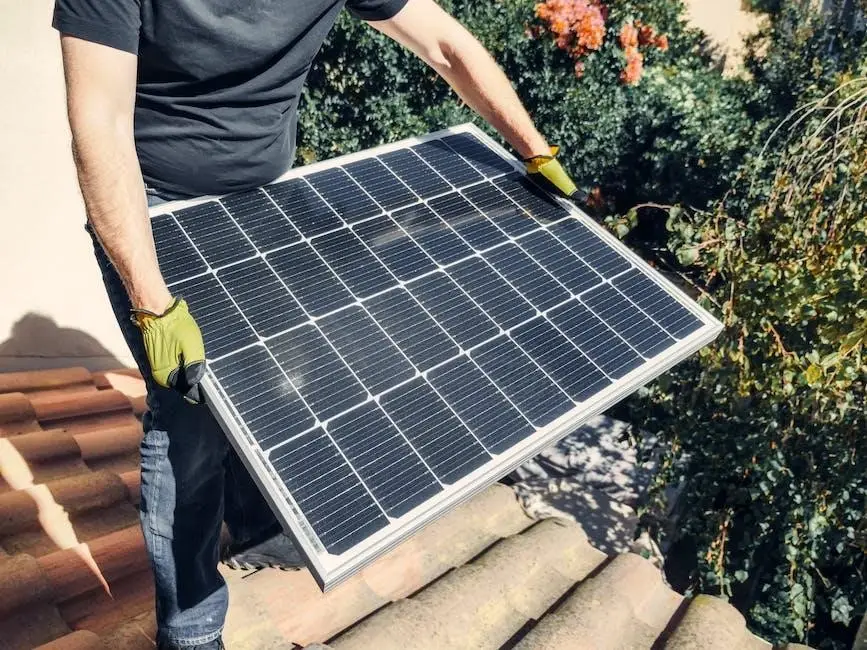Solar power is an important tool for meeting the world’s growing appetite for energy while reducing our reliance on fossil fuels. As the technology improves, more and more companies and everyday citizens adopt it, with the United States solar industry growing by 20.5% in 2022. But what happens when solar panels reach the end of their lifespan?
Most solar panels currently in service were installed over the last decade. As they reach the end of their service life, there are some critical questions we’ll have to answer.
Are solar panels recyclable? What’s the best way to dispose of an old solar array? Is the power they provide worth the e-waste they can generate?
If you’re considering adopting solar power, these points are worth considering. Let’s start by looking at how solar panels are made and why old panels can be challenging to dispose of.

How Are Solar Panels Made?
Solar technology is possible because of the photovoltaic effect, This is a natural phenomenon where certain materials can produce an electric current when exposed to sunlight.
Harnessing this actuality on command requires building panels that have hundreds or even thousands of photovoltaic cells. These cells consist of silicon wafers, metal conductors, and glass or plastic coverings.
To build a single photovoltaic cell, you first have to refine raw silicone into solid, cylindrical ingots. These ingots get sliced into razor-thin wafers no more than half a millimeter thick. These wafers are the building block of the finished cell.
These wafers are chemically treated and have metal conductor rods added to their tops and bottoms. This lets the solar unit conduct the voltage the individual cells generate.
The finished cells are assembled into modules. A layer of protective glass or plastic is placed over the top of the module to shield it from the elements. A back sheet is secured to the bottom to provide insulation.
These finished modules are the solar panels you can buy from your local solar provider. Your installer will affix them onto mountings for installation, usually on a building’s roof or an adjacent patch of open ground.
Modern solar modules can last for 30 years or longer. But like most tech, their service life is finite. Even under the best circumstances, panels will need replacing and disposing of at the end of their lifespan.
Are Solar Panels Recyclable?
The short answer is “yes”. Many of the materials used in solar panels are ripe for recycling.
For example, glass makes up about 75% of silicon-based photovoltaic panels by weight and roughly 90% of thin film-based photovoltaic panels. Glass is one the easiest materials to recycle, with it being 95% reusable. Plastic is another common material and is likewise recyclable.
About 6-8% of a standard photovoltaic panel is made of aluminum, which is 100% recyclable. Aluminum is also a popular material for solar panel mounting due to its high strength-to-weight ratio.
Silicone is the most valuable material used in solar cells and is therefore attractive to recyclers. It makes up about 5% of a silicone-based panel.
At present, however, most solar panels are not recycled. Instead, they contribute to the 50 million tons of e-waste we produce each year.
Though they only make up a small fraction of that sum, no amount of e-waste is ideal. Discarded electronics are a significant pollution problem, often containing toxic chemicals and heavy metals that can leak into local environments. If solar panels are going to power our green future, we need to work toward minimizing any harmful effects they may have.
Why Is It a Challenge to Recycle Solar Panels?
The problem is that solar panel recycling is only in its adolescence in the United States. Services exist in some parts of the country, but they’re far from ubiquitous.
That’s expected to change in the years to come. Most of the solar panels currently in service are still early in their lifespans, so there isn’t much demand for solar recycling. But as these systems start to age out of service, there will be a greater incentive for recyclers to take solar panels.
According to a 2016 study, retired solar panels will generate about 78 million tons of raw materials and usable parts by 2050. Those materials will have a value of about $15 billion. The recycling industry is unlikely to ignore a potential revenue source like that.
Even so, it’s recycling complex electronics like solar panels is far more difficult than dealing with discarded cans, bottles, and plastics.
Popular Recycling Methods
There are a few ways to recycle solar panels. The three most common are reuse, mechanical recycling, and chemical processing.
Each has positives and negatives that can affect how practical they are and the kind of ecological footprint they leave.
Reusing and Refurbishing Old Solar Panels
When someone talks about recycling e-waste like solar panels, what they’re usually referring to is the process of breaking that piece of equipment down into its into their component materials and using those materials again elsewhere. This is often the best way to dispose of e-waste that is beyond the point of ever being repaired.
Not all e-waste is that far gone, however. Old computers, cell phones, and the like can sometimes be refurbished to extend their lifespan, rather than scraping them altogether.
The same is true of solar panels. Some are still enough good-enough condition to have potential applications.
The catch is that once a solar panel is past its warrantied service life, it tends to produce less energy over time. The longer you keep a panel running past its expiration date, the more diminishing the returns.
This makes refurbishing solar panels an imperfect and temporary solution. These second-hand panels are best reserved for small jobs where a steady or large-scale power supply is not important.
Mechanical Recycling
True recycling, as opposed to refurbishing, requires physically breaking down the panel. The most common way of accomplishing that is through mechanical recycling.
At the most basic level, this process may involve removing the aluminum framing. Hence, all recycled solar panels undergo some level of mechanical recycling.
Beyond that, a panel that’s not worth more intensive recycling methods may be ground down to create a material called “glass cullet”. This substance can then find its way into construction materials as a concrete aggregate, in some insulation products, and as an additive in bricks.
Mechanical recycling is great for turning bulk components like glass, plastic, and steel into usable material. But it’s not the most efficient recycling method, letting valuable materials like silicon go to relative waste.
Chemical Processing
Chemical processing is the most intensive method of solar recycling. It uses chemical treatment and heat to strip the various components of a solar panel apart.
This lets recyclers salvage the silicon used in solar cells, tiny scraps of silver from conductive wiring, and other valuable metals and minerals.
Getting Rid of Solar Inverters and Mountings
The panels themselves aren’t the only parts of a solar array that can be recycled.
Almost all solar arrays have a device called a solar inverter. Its purpose is to take the electrical current generated by photovoltaic cells and convert it into usable energy for your home or business.
Like solar panels, these wear out with use. A new set of panels will often need a new inverter to handle any changes in voltage. You should recycle the old units as you would any other type of e-waste.
The mountings for solar panels are usually made from steel or aluminum. Over time, they can start to show their wear. Your installer may need to build new mountings when you replace your old panels.
Old mountings should make their way to a recycling facility or scrap yard.
Options to Dispose of Old Solar Panels
A crucial aspect of managing our solar e-waste is reducing the amount of retired solar panels we generate in the first place. That means working with providers who take advantage of emerging technology to produce the most efficient and long-lived arrays possible. If you contact Blue Raven for solar services, for example, they can help you get the most longevity possible out of your new solar system.
However, even the best solar system will need to be retired sooner or later. And because the United State’s solar market is still going through growing pains, you may not have easy access to a suitable recycling service. It often depends on where in the country you’re located.
The first thing you should do is contact your local government and inquire about solar and e-waste recycling opportunities. Even if your municipality doesn’t offer these services, they may be able to direct you to a firm that does.
Barring that, there are a few companies like We Recycle Solar that will accept damaged or degraded solar panels. You should also contact your solar provider. Most solar installers maintain relationships with manufacturers, who may have programs in place to reclaim retired solar panels. If that’s not possible, your installer will also be your best bet to find a qualified recycler near you.
Making Sure Solar Energy Is Green Energy
Solar power will only become a more important part of our global energy portfolio as the years go by. Questions like “Are solar panels recyclable?” and “How can we make solar sustainable?” will be likewise important.
This guide to solar panel disposal is only a starting point. For more ways to make your home and business green, check out the other articles and tutorials on our site.
Subscribe this Channel: YouTube.com/Waqas Mushtaq
Disclaimer: All Images that are Used in this post from Instagram & Google Image and Credit Goes to their Respective Onwer. The above details are sourced from various Online reports. The website does not guarantee 100% accuracy of the figures.Contact Us on this Email info@bioofy.com for Credit or Remove these Images.
Note: Bioofy.com does not aim to promote or condone piracy in any way. Piracy is an act of crime and is considered a serious offense under the Copyright Act of 1957. According to the Indian copyright act, an attempt to commit, aid, support, or counsel an act of piracy will be punishable with up to 3 years of imprisonment, and up to a ₹2,00,000 fine.

